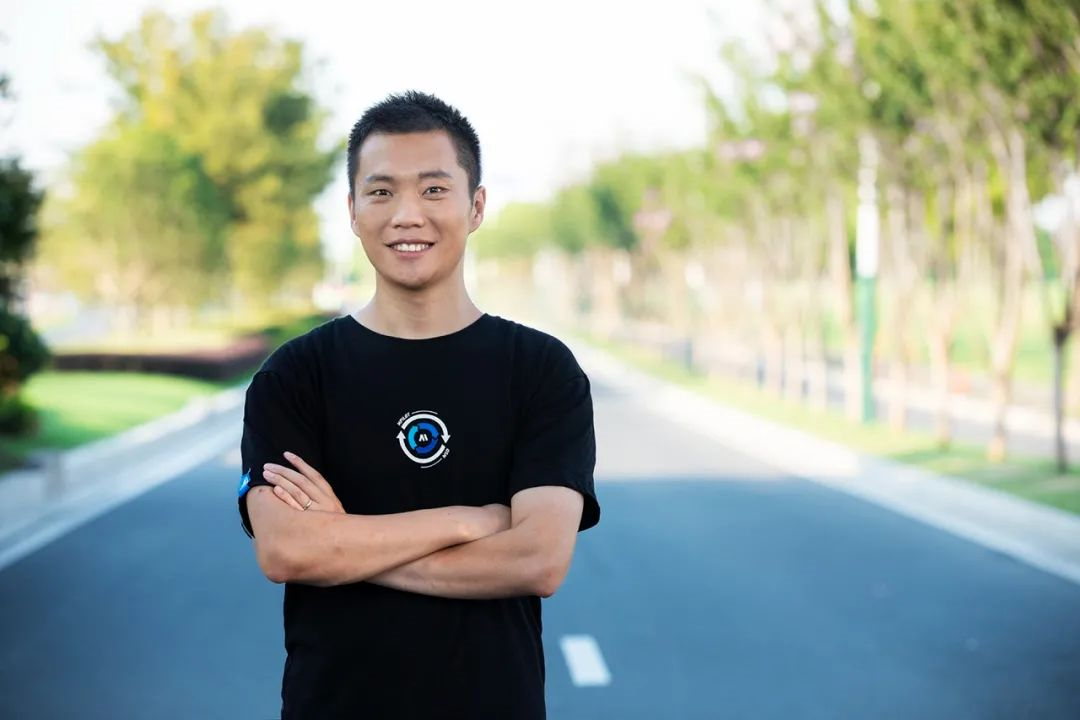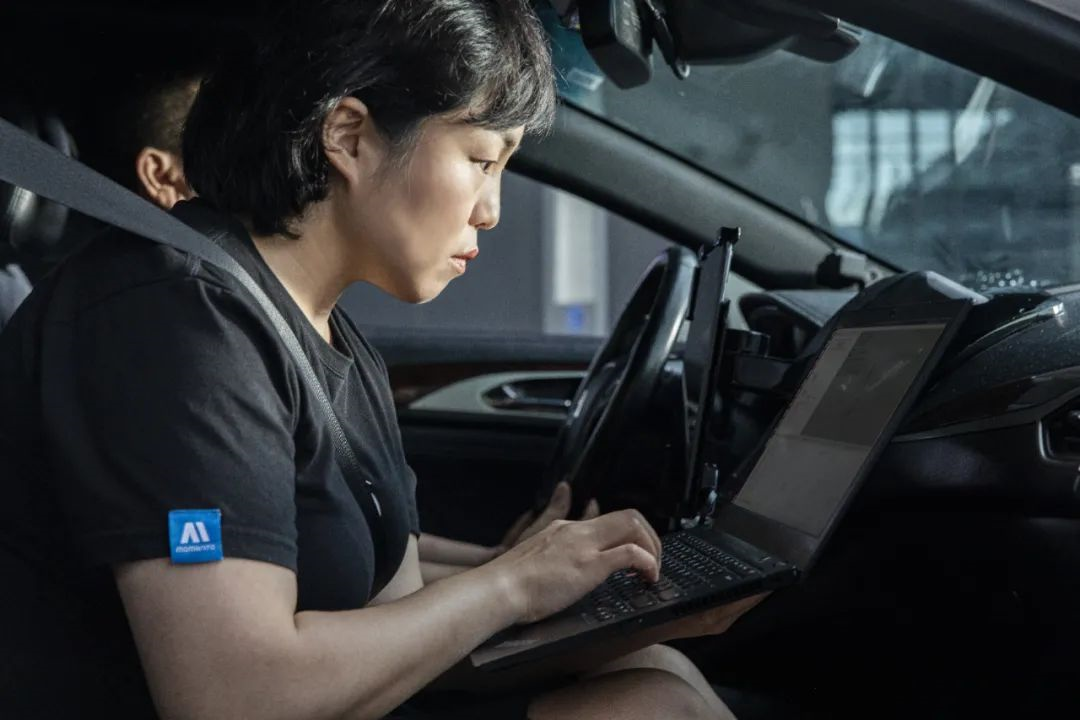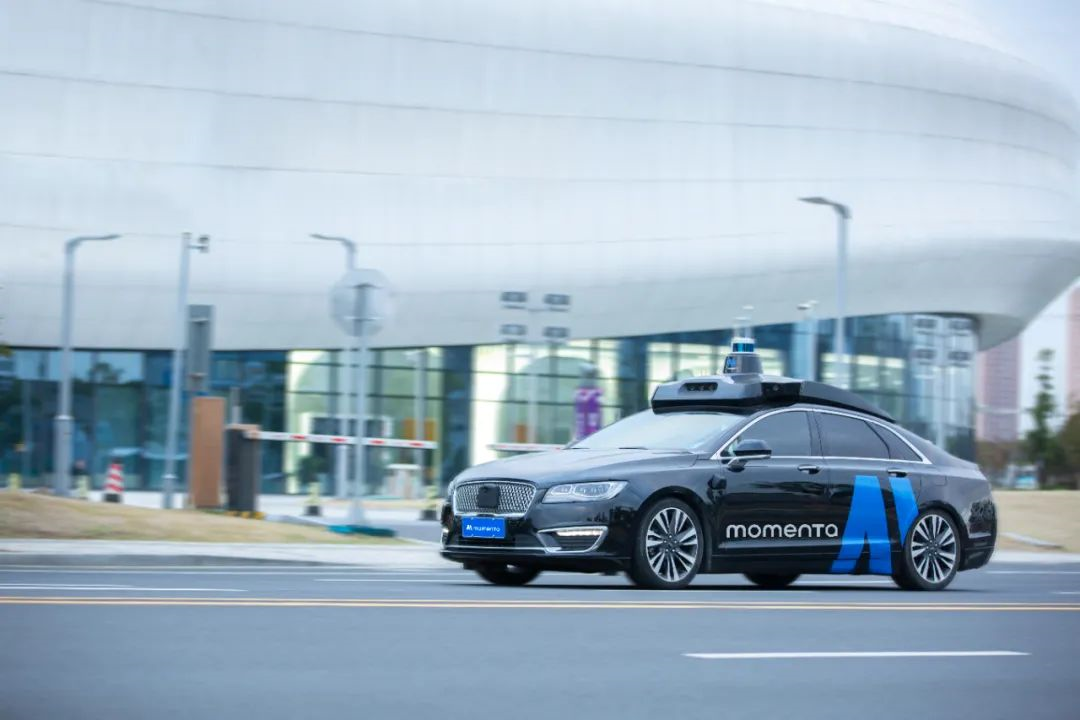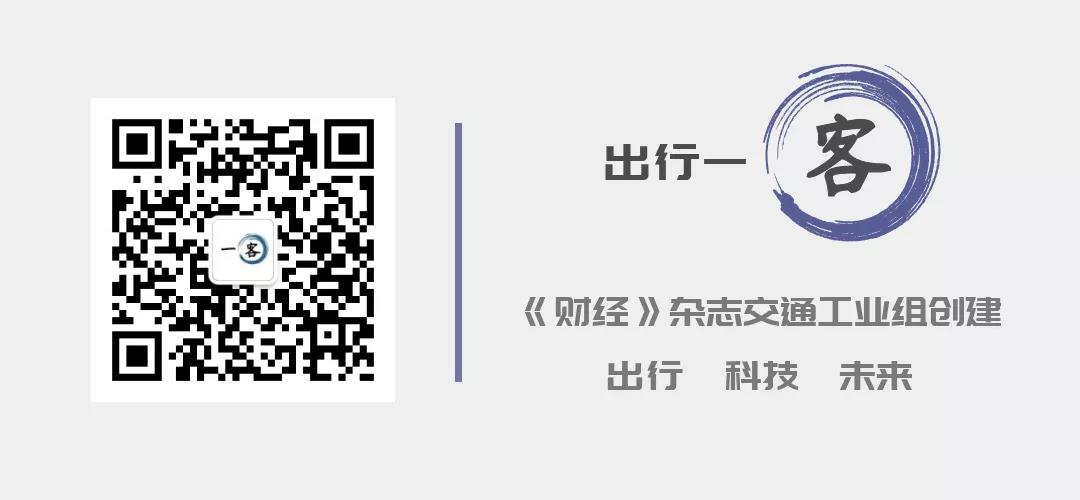This article is authorized repost from Carcaijing (WeChat official account ID: carcaijing), created by the Transportation Industry Group of “Caijing” Magazine. Author: Wang Jingyi, Editor: Shi Zhiliang.
Automatic driving enters the second half with different technical routes and approaches
Carcaijing (ID: carcaijing) exclusively learned that the automatic driving start-up company Momenta has completed over 500 million US dollars in financing in the C+ round, with a total financing of over 1 billion US dollars in the C round, which is the largest financing in China’s automatic driving field since 2021.
Lead investors in this round of financing included Chinese strategic investment company SAIC Group (600104.SH), international strategic investment company General Motors (NYSE: GM), Toyota Motor (NYSE: TM), Bosch Group, as well as well-known investment institutions Temasek and Yunfeng Fund. Other investors participating in the C round of financing include Mercedes-Benz, IDG Capital, GGV Capital, Shunwei Capital, Tencent, and Kai Hui Fund.
In 2021, the overall automatic driving industry has experienced a financing boom. Innovation Works Chairman and CEO Li Kaifu told Carcaijing (ID: carcaijing) that, catalyzed by the COVID-19 pandemic, automatic driving is accelerating towards implementation, not only creating value in rich scenarios such as automatic driving taxis, automatic driving trucks, and unmanned handling in factories or warehouses, but also serving as the most important next-generation platform for intelligent automation, including artificial intelligence, advanced computing, big data, and automation, and a future-oriented competition.
In March, Momenta had just completed a total of 500 million US dollars in financing in the C round; eight months later, another 500 million US dollars in financing entered the C+ round. Carcaijing (ID: carcaijing) learned that as of November 2021, Momenta, founded in 2016, has raised a total of 1.2 billion US dollars in financing.
“From the perspective of the entire C round financing, our funding is relatively sufficient. And we have a lot of top-tier vehicle companies and Tier-1 suppliers as investors, which is different from the investment structure of many other competitors. What we value most is the recognition of top-tier vehicle companies for us, which is more important than how much money we can get. Since they recognize our technology, they will certainly give us some orders and R&D business to do automatic driving products together, which is a double recognition and also a big difference between us and our competitors,” said Zhang Peng, Momenta’s Chief Financial Officer, in an interview with Carcaijing (ID: carcaijing).
It is widely believed in the industry that automatic driving is on the eve of large-scale commercial implementation. Momenta CEO Cao Xudong also stated that the financing will be used to accelerate the landing of unmanned driving on a large scale.
According to Ding Lijun, a partner at Kaihui Fund and interviewed by Carcaijing (ID), the popularization of level 3 autonomous driving since 2020 has become an industry consensus. Some level 4 autonomous driving has already been implemented in specific commercial vehicle scenarios, and the exploration of Robotaxi (autonomous driving rental cars) passenger transportation is on the fast track. The next five years will be a crucial period for upgrading from the current level 2 to level 3 and beyond. By 2025, the new market space in China’s autonomous driving industry will exceed 300 billion yuan.
“Old Driver” Algorithm
From accelerating at the startup, changing lanes, to entering and exiting the ramp, a Momenta autonomous driving test car carried Carcaijing (ID) and shuttled through the dense traffic of Suzhou’s elevated highway during the evening rush hour.
Despite the safety officer sitting in the driver’s seat for almost an hour, the steering wheel was completely out of their hands, and all tasks were solely handled by the algorithm. This product, called Mpilot by Momenta, not only deals with rear overtaking but also can actively speed up and overtake the front car. Its driving skills are so sophisticated that it has an almost human “old driver” style.
On the elevated highway during the evening rush hour, anything could happen. Even if the distance is close, the car behind still wants to overtake by force. If it were an inexperienced human driver, they would start to panic. The algorithm processes multiple operations in succession: first decelerating, then changing lanes. Not only does it avoid a potential collision, but it also does not brake too hard, which does not significantly affect the passenger experience.
What best reflects Mpilot’s “old driver” style is the active overtaking. Faced with a slower speed of the front car, the algorithm decisively decides to overtake, accelerating to the maximum speed limit of 100 kilometers per hour in a few seconds, fast entering the fast lane, then changing lanes back to the original lane, continuing to maintain a high speed of over 80 kilometers per hour.
Carcaijing (ID) has experienced several autonomous driving test cars from different companies. Compared with the others, Momenta’s driving habits are slightly more aggressive while ensuring safety, such as actively overtaking the front car and turning the ramp with higher speeds, almost no different from a human “old driver.” In Momenta’s view, this not only demonstrates technological maturity but also reflects the company’s spirit-after all, the meaning of Momenta is momentum, and the pursuit of “speed” is written into the company’s name.
 Back to the technology itself. Thanks to Momenta’s pure-vision autonomous driving solution, which is 12 surrounding cameras suitable for algorithms to “see” the surrounding environment, the lane-driving scene described above benefits from this solution. As for the driving scenarios such as getting off the ramp, the high-precision map solution begins to demonstrate its advantages.
Back to the technology itself. Thanks to Momenta’s pure-vision autonomous driving solution, which is 12 surrounding cameras suitable for algorithms to “see” the surrounding environment, the lane-driving scene described above benefits from this solution. As for the driving scenarios such as getting off the ramp, the high-precision map solution begins to demonstrate its advantages.
When there are only dozens of meters away from the exit, the human eye can only vaguely see the blue sign ahead. However, thanks to the high-precision map built into Mpilot, it is familiar with the road conditions ahead and starts to change lanes in advance to avoid the embarrassment of encountering heavy traffic or being unable to leave if it changes lanes too late.
It’s worth mentioning that during the October trial of Outing One (ID: carcaijing), it rained heavily in Suzhou, and the sky was overcast. The road was full of rain and fog stirred up by other vehicles, which significantly affected visibility. Mpilot still managed to drive about 50 kilometers in the city in around 50 minutes.
Mpilot is one of Momenta’s two core products, referred to as “mass-production autonomous driving.” Mass production means that this product can be applied to mass-produced vehicles and handed over to ordinary consumers.
“Running for 30 minutes on the road every day is different from running for eight hours every day. At the same time, running for eight hours in a coach room is completely different from running for eight hours on a real road,” Zhang Peng told Outing One (ID: carcaijing), “This way, we can obtain a massive amount of real data, update the algorithm, and make it quickly become an “experienced driver” through various tool chains. Our technical efficiency and cycle on the technical route are faster than the industry, which is the core technological model.”
How to mass-produce Mpilot? This requires deep cooperation between Momenta and automakers to jointly develop models, including discussing hardware selection and front-loading automatic driving functions into vehicles.
Automakers are not only customers but also investors in Momenta. The outside world’s impression of this autonomous driving start-up company is also shaped by these well-known investments. From Asia’s SAIC Motor Group and Toyota to GM and Daimler in Europe and America, automakers in the same field of competition have reached a consensus on the demand for autonomous driving technology and have made massive investments in Momenta.
The first model to be delivered is the IM L7, a joint development with shareholder SAIC Motor Group. This model can provide automatic assistance driving functions such as parking, high-speed, and urban driving scenarios, with a pre-sale price of 408,800 yuan, aimed at high-end new energy vehicles, and is expected to be delivered in the first quarter of 2022.
On the one hand is automatic assisted driving, and on the other hand, L4 fully automatic driving. The former is easy to implement, while the latter has a vast imagination space for the future. This is the road of dispute in the autonomous driving industry, and all companies must make choices.Companies such as Waymo in the United States, Pony.ai and WeRide in China, and Wenrui Zhixing are developing Level 4 autonomous driving systems and forming their own vehicle fleets for road testing to obtain data, optimize their systems, and ultimately move towards widespread Robotaxi (self-driving taxi) operation.
Nevertheless, Momenta believes that building their own Level 4 road testing fleet is too expensive and takes too long to have an effect. Instead of taking the completely unmanned Level 4 technology route from the very beginning, Momenta has adopted a unique “one flywheel, two legs” mode in the hopes of achieving both automatic assisted driving and fully automatic Level 4 driving ability.
CEO Cao Xudong calculated that if the goal of testing one billion kilometers through a self-built fleet were to be achieved, one million cars would need to operate for 10 hours every day, running continuously for a year. Additionally, these cars would have to carry laser radar, sensors, chips, etc., with a single laser radar unit costing 100,000 yuan, and the average cost of each car being about $100,000 (approximately 700,000 yuan), resulting in a total investment of up to 100 billion U.S. dollars, a sum too astronomical for a single start-up company to bear.
Momenta’s solution is to first collaborate with automobile manufacturers to develop pre-installed mass-produced models, the aforementioned Mpilot product line, to directly obtain massive, authentic, and desensitized driving data. When the Mpilot-equipped models are released on a large scale, the data will continually train and optimize the “flywheel” algorithm, culminating in L4 autonomous driving (which Momenta calls the MSD product line) progress and implementation, or “one flywheel, two legs.”
SAIC Motors stated that their investment in Momenta is due to an appreciation of its “flywheel” core technology advantage and its potential to provide industry-leading autonomous driving solutions for global customers.
What is “flywheel”? Momenta’s flywheel senior director, Xiang Kai, explained to “One Customer, One Journey” (ID: carcaijing) that it is a large-scale technology system divided into three parts – data-driven engine, massive data is the fuel, and closed-loop automation is the accelerator. Collect data first and give meaning to that data, learn from it, and use the massive data to make the algorithm automatically iterate, with the automatic efficiency getting better and better. Once this system is established, both the AI and commercial growth will be very fast, according to Momenta. According to Momenta, flywheel’s advantage is that it doesn’t have to solve long-tail issues one by one, and “the development efficiency at this stage has increased by nearly tenfold compared to the completely manually-driven method.”# Translation
To Carcaijing (ID: carcaijing) as an example, traffic lights are typical long-tail problems. Traffic lights from all over the country and the world vary greatly in shape, some are round, some are square, some have numbers, and some have arrows. Sometimes the traffic light’s appearance doesn’t change, but the light doesn’t work, and it’s not red or green but a black light, which the system has never seen before. For example, if there is a large vehicle blocking the traffic light ahead, people can judge it by the surrounding traffic flow, and the algorithm also needs to continuously upgrade through massive data, considering the driving behavior of surrounding vehicles, in order to solve long-tail problems.
“The English word for ‘飞轮’ is ‘flywheel’, representing a heavy wheel. We think this metaphor is good, which means that it takes a lot of effort to build this wheel. And the wheel is heavy, and the weight will accumulate. Once it starts to rotate, it will spin faster and faster, which can vividly express the concept of data-driven.” To Carcaijing (ID: carcaijing), I express.
When a group of scientists starts a business
Flywheel is a strategic name, and the Chinese and English names of the company are respectively “初速度” and “Momenta”. According to Sun Huan, the European General Manager of Momenta, “they all feel like scientists.”
“Our Chinese name is ‘初速度’, because we want to give people a feeling of energy, ‘初’ also indicates that we are a vibrant and motivated team. With the Chinese name, we focused on speed and thought of many English words related to kinetic energy and momentum. Momentum represents speed, and has the meaning of ‘fast’. Momenta is the plural form of momentum, representing that everyone is a momentum, and everyone adds up to become Momenta,” Sun Huan told Carcaijing (ID: carcaijing).
This is a company founded by a group of scientists. Momenta was established in September 2016. CEO Cao Xudong graduated from Tsinghua University and was a researcher and executive R&D director at Microsoft Asia Research Institute and SenseTime, respectively, and is a technical expert in the field of computer vision.
Many members of Momenta have a deep learning research background and come from institutions such as Tsinghua University, Massachusetts Institute of Technology, and Microsoft Asia Research Institute. As an early member, Sun Huan told Carcaijing (ID: carcaijing) that many founding team members have a strong connection with Cao Xudong and have worked with him since the Microsoft Research Institute, all of whom are in the forefront of deep learning and artificial intelligence. The team members are relatively stable and have deep trust in each other.
“Around 2015 and 2016, deep learning had a great development in the field of computer vision, including the first time that machine vision surpassed human vision. Computer vision reached a time when it could truly commercialize, and we also established the company at that time,” Sun Huan recalled.A group of computer vision experts: why did they choose to specialize in autonomous driving? Momenta summarizes it as “interesting and meaningful”: autonomous driving is the crown jewel of artificial intelligence, with great commercial value and significant technical challenges.
“Our definition of autonomous driving is to solve the problem of autonomous driving on a large scale, rather than doing a demo in a ready-made environment. We hope that more vehicles can perform autonomous driving anytime, anywhere. So we start with the end in mind, and from the first day of establishment, we have clearly defined the path of the flywheel and the challenges after the clear path: Mpilot is the first generation of development, and it needs to be broad; MSD is the first generation of pre – research and it needs to be deep.” According to Sun Han, who spoke to the “One Passenger” (ID: carcaijing).
Miles per intervention (MPI), the average mileage between every two manual interventions, is currently the most commonly used quantitative indicator for evaluating the technological level of each autonomous driving company, including professional institutions and businesses such as the California Department of Motor Vehicles (DMV).
The DMV’s 2020 full-year autonomous driving data show that two Chinese autonomous driving companies, AutoX and WeRide, ranked among the top five, following closely behind Waymo and Cruise in the United States, and Argo, a subsidiary of Ford, ranked fifth. The top three of Waymo, Cruise and AutoX average between 20,000 and 30,000 miles per manual intervention, and the MPI of the tenth-ranked company is above thousands of miles. Momenta did not disclose its MPI data.
Because MPI data is uploaded by companies themselves, different scenarios and different vehicle models can lead to different performances. Many companies have questioned the reference value of MPI in recent years, and the industry still lacks a credible unified evaluation standard.
Guangzhou Securities Hang Seng proposed that corporate resources can also be an important indicator for measuring autonomous driving companies, including accumulated financing, shareholder background, technical team resources, local government cooperation resources, and commercial cooperation resources, among others.
Momenta’s largest shareholder is SAIC Group, which is the autonomous driving company with the most endorsements from car companies and suppliers (SAIC, GM, Toyota, Bosch, and Daimler), and its cumulative financing amount has reached US$1.2 billion as of November 2021, with undisclosed valuation.
 “Company is always popular in the primary market, with strong financing abilities. Even in this big market context, we have raised a lot of money. Financing participants include SAIC, GM, Toyota, Bosch, Daimler, and renowned funds like Yunfeng. Our approach is to grasp the rhythm of the business and raise funds accordingly.” Zhang Peng told Carcaijing.
“Company is always popular in the primary market, with strong financing abilities. Even in this big market context, we have raised a lot of money. Financing participants include SAIC, GM, Toyota, Bosch, Daimler, and renowned funds like Yunfeng. Our approach is to grasp the rhythm of the business and raise funds accordingly.” Zhang Peng told Carcaijing.
“Just telling the ‘a flywheel and two legs’ story is not enough to attract financing. It’s important to understand the core demands of the customers. Sometimes, starting with a small project and then moving on to large scaled projects may help build relationships based on trust, rather than just telling a story. Toyota and GM recognized our abilities step by step through our practice in different projects. Building long term relationships is a systemic process.” Sun Huan said.
In the process of converting technology into products, there are many technical problems to be solved beyond the familiar technology for scientists. In 2019, Momenta’s autonomous driving products took shape. Servicing customers became an urgent new issue for the management team. Within two months, six customer-centered themed seminars were conducted, in which all management and front-line staff participated in the development of related courses and case studies.
Zhang Peng revealed that starting from last year, Momenta began a deep partnership with several top automakers for front loading mass production. This year’s partnership is expected to expand further, and the company plans to develop and deploy autonomous driving technology suitable for global driving environments in the future.
In the field of mass production of autonomous driving, Momenta has achieved remarkable success, but L4 level and above of fully autonomous driving requires greater imagination. According to China International Capital Corporation’s calculation, the global Robotaxi market is expected to exceed $2 trillion by 2030, presenting a major battlefield for autonomous driving companies.
In mid-2019, Momenta began researching L4 level autonomous driving, namely MSD product lines, and one year later launched its Robotaxi product Momenta GO.
Chen Hong, chairman of SAIC Group, recently revealed that the Robotaxi that SAIC Group collaborated with Momenta will start operation in Shanghai and Suzhou this year and plans to enter Shenzhen in July next year.
As per Momenta’s plan, with massive data inflow from Mpliot mass production models by 2024, the “two legs” will be completely connected, leading to the mass commercialization of L4 level autonomous driving.
Several industry insiders have stated that there exist technical challenges to connect the L4 level technology with L2+/3 data.The approach taken by Momenta is to use a unified sensor configuration, unified algorithm interface and data format, and a unified software framework. The only difference between L4 vehicles and mass-produced vehicles is the addition of a LiDAR for safety redundancy. Technically, MSD algorithms can be used in Mpilot, and data from Mpilot can be used by MSD.
The challenge for Momenta is not only technical, but also commercial, and the company hopes to take three steps towards commercialization. First, provide customized R&D services to automakers to develop solutions. Second, after mass production, consumers can subscribe and pay for intelligent software. Third, in the future Robotaxi stage, the company will operate Robotaxi directly in a certain area and provide ride-hailing services.
However, the commercial prospects for Robotaxi are still controversial. In April of this year, Su Jing, the former head of Huawei’s intelligent driving product department, publicly stated that “Huawei will never do Robotaxi. Companies that do Robotaxi at this stage will be done for. Robotaxi is a result, not a business goal. The ride-hailing experience in China is already good, and autonomous driving will not make this experience better.”
Ding Lijun told CarCaijing that the most valuable and quickest way to commercialize autonomous driving is for autonomous driving companies to think about how to achieve efficient landing in a scalable way when building their technical system, rather than achieving artificial breakthroughs in limited cities.
In 2021, the industry generally believes that autonomous driving has entered the second half of commercialization. The most difficult task of going from 0 to 1 has been achieved, and the competition between mass production and scaled landing has begun. Whoever can achieve “from 1 to N” first and has the ability for scale can stand out in the competition in the second half.
According to Zhang Peng, the biggest test of “from 1 to N” is the ability to scale. First, crossing from “1 to N” must be accomplished from a management perspective, such as how to expand from a small case to many cases in technology, and how to expand from one customer to many customers in the management of the background, and how to support both Chinese and overseas customers.
Financing is still a necessary task for startups without the ability to generate revenue. Zhang Peng stated that the company will need financial support for the next five years to lower overall financing costs and ensure good development. “At this stage, finding good strategic investors is more important because they not only recognize the technology, but are also willing to provide funding.”In the near future, an operating system that integrates AI, multiple perceptual technologies, hardware and software communication, operation decision-making, cloud computing, and other technologies will be implemented in cars. The vehicles will have eyes, hands, and feet, just like humans, capable of seeing, hearing, walking, and moving. Li Kaifu, in an interview with Outing YiKe (ID: carcaijing), stated that after reaching this level of autonomous driving, two things will happen: first, AI will become more accurate and efficient with the vast amount of data available, and second, production will increase, lowering the cost of components, thus enabling consumers to use autonomous driving and robotics operating systems at a reasonable price.
The first half of the technology battle has been fought, with the top player lineup already established. However, in the second half of the competition for autonomous driving, other factors such as supply, cost, durability, and adaptability must be considered. Completing a $1 billion Series C financing, Momenta has further advanced in the competition.

This article is a translation by ChatGPT of a Chinese report from 42HOW. If you have any questions about it, please email bd@42how.com.
